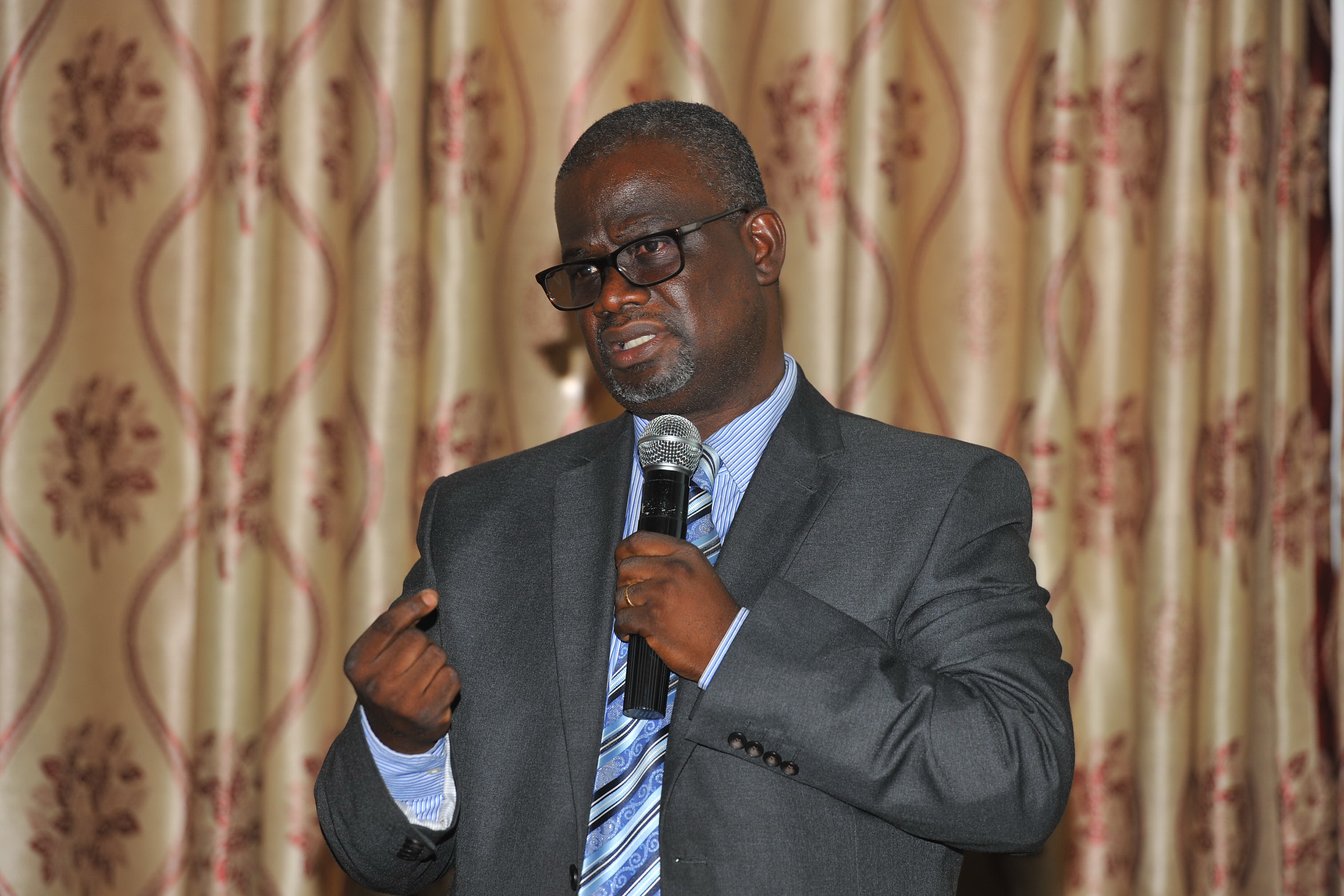
Why Ghana risks queuing for water in the not too distant future (video)
A water quality monitoring and assessment index of the major rivers of Ghana from 2013 has established a considerable decrease in the quality of water in most of the river basins due to the activities of illegal miners.
Advertisement
The worrying trend, according to the index, which is also the result of the removal of vegetative cover, fertiliser use on farmlands indicated that the activities of illegal mining is shown in the waters by the presence of unusually high floating solids and high turbidity during the dry season.
Poor water quality
The Director of the Water Research Institute, Professor Osmund Ansah-Asare, made this known in Accra on Thursday when the media coalition against galamsey in collaboration with the International Association of Impact Assessment – Ghana (IAIA-Ghana) took their campaign to research scientists to explain the effects of the galamsey menace on the environment to the public.
The coalition which was led by its convener and the Managing Director of the Graphic Communications Group Limited met with officials of the Council for Scientific and Industrial Research (CSIR) who took the coalition through the consequences of the galamsey menace on the environment.
Prof. Ansah-Asare who gave a power point presentation with harrowing graphic photographs revealing the extent of damage caused the environment by the illegal miners expressed fear that Ghanaians either risked queuing for water or would have to import water in the not too distant future.
Watch a video of the presentation below
Making a presentation on the state of water quality in the country, he disclosed that the highest areas of poor water quality were found in mining areas and areas of illegal gold mining noting that most of the waters in 2010 had decreased in quality except the River Butre, Tano, and the Barekese Reservoir.
Weal legal regime
He indicated that activities of small-scale miners especially the illegal ones degraded the land more than their counterpart in the large-scale sector due to weak legal regime.
The director added that that what was more disturbing was the fact that the Chinese blocked the water course, denied inhabitants source of drinking water and deteriorated the quality thereby reducing the quantity of water available to the people for drinking purposes.
“The government of Ghana has a task to improve water quality and also reduce treatment cost. Gold mining brings with it arsenic, mercury and sulphur contamination of water bodies, soil and even air,” Prof. Ansah-Asare added.
Among his recommendations were for steps to be taken to legalise galamsey for it to be monitored to ensure sustainability of the environment.

Director of the Water Research Institute, Professor Osmund Ansah-Asare
Need for concerted approach
Also to make a presentation on the topic “Institutional challenges propping illegal mining; Corrective measures towards sustainable mining” was the President of the IAIA-Ghana, Mr Yaw Amoyaw-Osei, who gave another perspective on the issue saying the complexities and sophistication of galamsey required a multi-pronged, sustained and concerted approach to tackle it.
He underscored the need to entrench sound environment governance arrangement in the mining sector and also address the fundamental risks of institutional failings. He further spoke about defining the types of illegal mining to find the appropriate customised and sustained solutions to them.
He identified some other forms of illegal mining that equally and significantly impacted the environment as transferring a mining license to mine other areas without authorisation, mining several contiguous small scale mining sites often deploying heavy duty equipment and mining with prospective license.
Institutional failures
“Institutional failings in mining sector environment governance has nurtured and propped galamsey into this monumental monster stirring us in the face,” Mr Amoyaw-Osei remarked and added that the setting aside Section 12(2) of Act 490 of the Mining law was an error in law and a sign of poor environmental practice of which the Environmental Protection Agency and the Minerals Commission were answerable.
He recommended among other things that the Minerals Commission identified areas of small scale mining and conduct strategic environmental assessment of any area of those mining areas and the community or district mining cooperatives should apply for the required mineral rights license and conduct the limited impact assessment.
Mr Ashigbey who co-chaired the event with the Deputy Director General of the CSIR, Prof. Mamaa Entsua-Mensah, said the coalition was ready to intensify its campaign to press home its case for Ghanaians to rise up to the effects of the galamsey menace on the environment.
While reiterating the objectives of the coalition to among others name, shame and possibly push for a jail term for offenders, Prof. Entsua-Mensah for her part added her voice to condemn the level of destruction caused the environment and urged Ghanaians to join in the campaign to bring the menace to an end to save the environment from further destruction.
The Media Coalition against Galamsey took its campaign a notch higher with the involvement of scientific researchers in the fight to bring to the attention of the public the effect of galamsey activities on the country’s water bodies.



